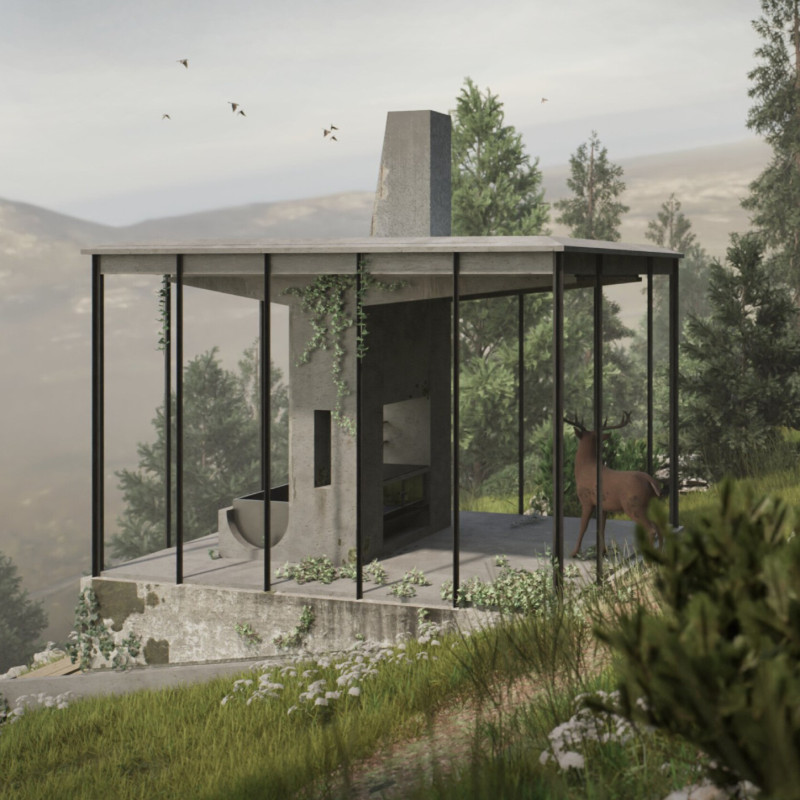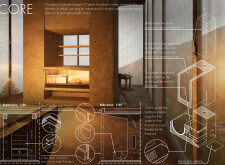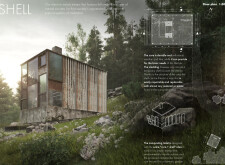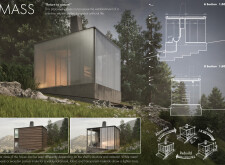5 key facts about this project
### Overview
Located in a naturally rich setting, the project embodies a contemporary architectural response that reflects a desire to reconnect with nature amid urban complexities. The design aims to enhance mental and physical well-being, offering a new way of living that prioritizes simplicity and harmony with the environment. By integrating concepts of sustainability and functionality, it stands as a modern interpretation of the philosophical ideals of returning to one's roots.
### Architectural Form and Materiality
The structure features a rectangular, modular form supported by a prominent overhanging roof, creating a modernist silhouette that aligns with the landscape's contours. A diverse palette of materials has been thoughtfully selected to enhance both aesthetic and functional qualities. Reinforced concrete forms the foundation and core, while steel is employed for structural integrity in cladding applications. Generous use of glass panels fosters transparency and improves natural light flow, effectively linking the interior with the exterior environment. Cladding materials, including wood and customizable aluminum sheets, add warmth and visual interest while contributing to the building’s sustainability profile. Natural finishes, such as raw wood and earth-toned textures, emphasize its integration with the surrounding landscape.
### Sustainable Design Features
The project incorporates several eco-friendly features that enhance resource efficiency and promote sustainable living. Passive design strategies, such as natural ventilation and solar water heating, are integrated to optimize energy use. A rainwater harvesting system is included, along with innovative plumbing solutions to repurpose heated water, minimizing waste. The core-shelled concept allows for a durable core equipped with essential utilities, while the adaptable exterior can be constructed or repaired using local materials, reinforcing the building's resilience and sustainability. Additionally, the landscaping scheme is designed to minimize land disturbance and preserve existing flora, further demonstrating the commitment to environmental integration and community impact.

























































